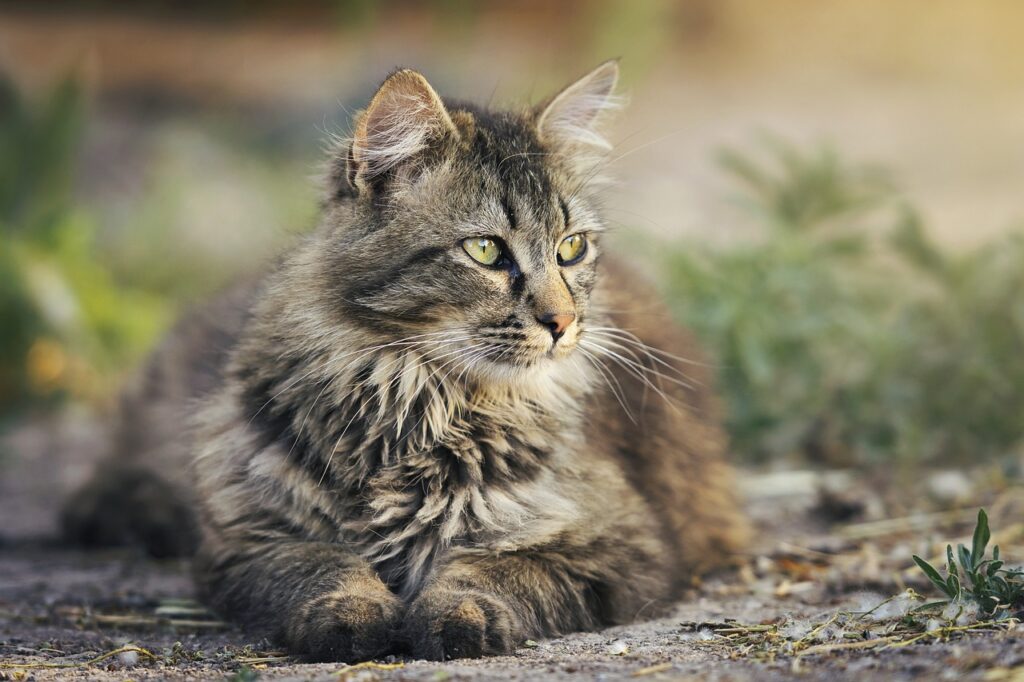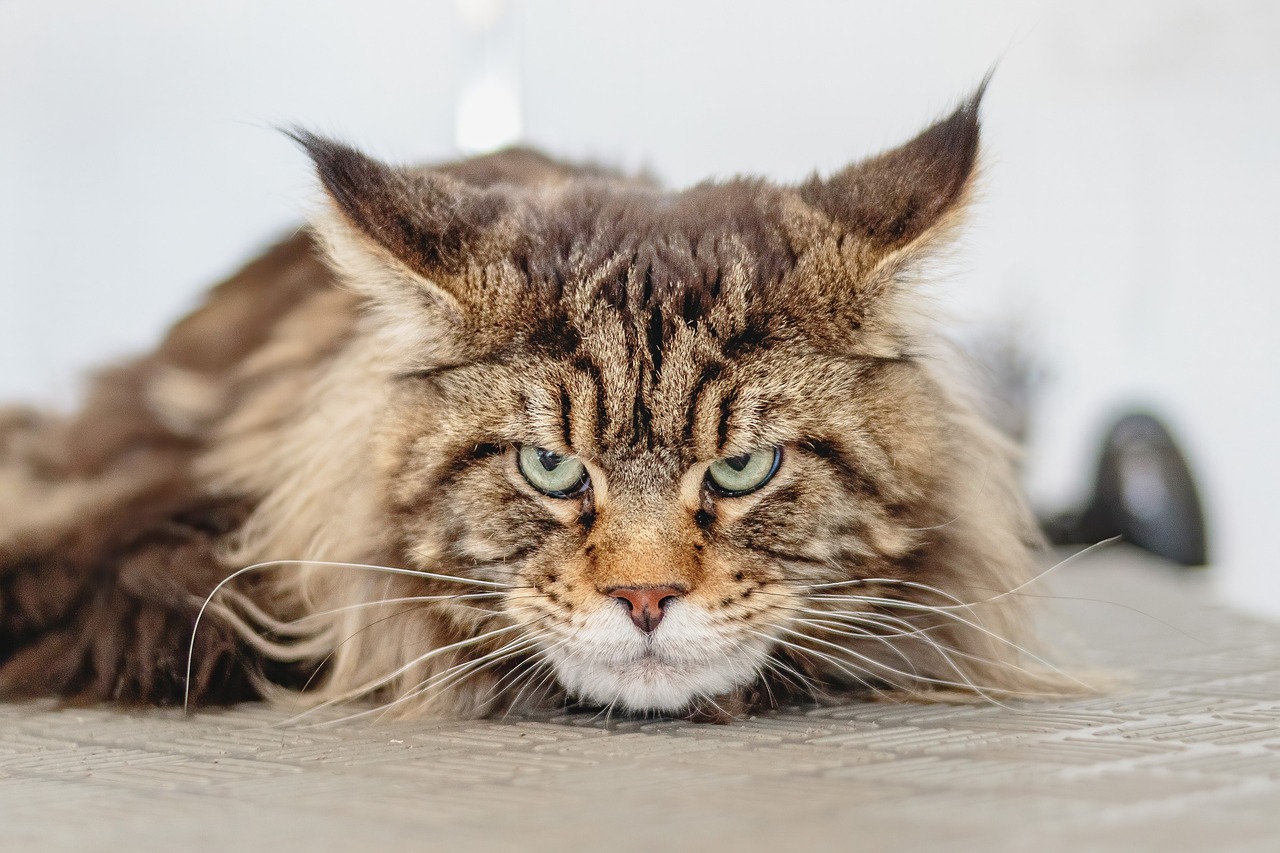Keeping your cat at a healthy weight is key for their health. This guide will show you how to help your cat lose weight safely. We’ll look at why cats gain weight, set achievable weight loss goals, talk about diet and exercise, and how to track progress. By the end, you’ll know how to help your cat get to a healthier weight and live better.
Understanding Feline Obesity
Obesity is a big issue for cat owners, with up to 60% of cats in the U.S. being overweight or obese. It’s important to know the causes of weight gain in cats and the health risks of obesity. This knowledge helps in making a good plan to help your cat lose weight.
Table of Contents
Causes of Weight Gain in Cats
Cats gain weight mainly because of their lifestyle. This includes eating too much and not moving enough. Cats that eat high-calorie foods, get too many treats, or eat whenever they want tend to gain weight. Some cats also can’t keep a healthy weight because of health issues like hypothyroidism or diabetes.
Health Risks Associated with Obesity
Being overweight can cause serious health problems in cats, such as:
- Joint problems and arthritis, which can cause pain and mobility issues
- Increased risk of diabetes, a life-threatening condition that requires careful management
- Heart disease and respiratory problems, as excess weight puts strain on the cardiovascular and respiratory systems
- Decreased life expectancy, with obese cats living up to 2.5 years less than their healthy-weight counterparts
Knowing the health risks of obesity in cats is the first step to help your cat get to a healthy weight. This can make your cat happier and live longer.
| Potential Health Risks of Feline Obesity | Potential Consequences |
|---|---|
| Joint problems and arthritis | Pain, mobility issues, and decreased quality of life |
| Diabetes | Life-threatening condition requiring careful management |
| Cardiovascular and respiratory problems | Strain on the body’s systems, leading to further health complications |
| Decreased life expectancy | Obese cats may live up to 2.5 years less than their healthy-weight counterparts |

Setting Realistic Weight Loss Goals
Helping your cat lose weight starts with setting realistic goals. It’s important to find the right target weight and timeline for your cat. This can lead to a healthier, happier life for them.
Start by talking to your vet to find out your cat’s ideal weight. This depends on their breed, age, and size. With this information, you can set a safe goal for losing weight, aiming for 2-4% of their body weight each month. Losing weight too fast is not safe or effective.
It’s also key to have a timeline for your cat’s weight loss. Your vet can tell you how long it might take, usually 6 to 12 months. Celebrate small wins and be ready to change the plan if needed. Regular vet visits and weight checks are important to keep an eye on progress and your cat’s health.
The main thing to remember is to be patient and steady when how to get a cat to lose weight. With your vet’s help and your care, your cat can get to a healthier weight and live better.
Dietary Changes for Weight Loss
Proper nutrition is key for your cat’s weight loss. By choosing the right diet, you can help your cat get to a healthier weight. A high-protein, low-carb diet is best for cats to lose weight safely and effectively.
Choosing a High-Protein, Low-Carb Diet
Cats need a diet rich in animal proteins because they are obligate carnivores. A high-protein, low-carb diet makes your cat feel full longer, preventing overeating. Look for cat food with lean proteins like chicken, turkey, or fish, and less carbs. This balance helps with weight loss and health.
Portion Control and Feeding Schedule
Proper portion control and a feeding schedule are also key for weight loss. Measure your cat’s meals and avoid free-feeding to prevent overeating. A consistent schedule with smaller meals helps keep your cat’s appetite healthy and stops binge-eating.
Supplements like bone broth can also help, providing important nutrients for weight loss. Talk to your vet to find the best diet and supplements for your cat.
| Nutrient | Recommended Intake for Weight Loss |
|---|---|
| Protein | At least 30% of total caloric intake |
| Carbohydrates | Less than 10% of total caloric intake |
| Fat | Approximately 50-60% of total caloric intake |
By making these dietary changes and following a structured feeding plan, you can help your cat lose weight safely and effectively. Always work with your vet to make sure your cat’s nutritional needs are met during weight loss.
Increasing Physical Activity
Regular exercise is key to helping your cat lose weight safely and effectively, along with a healthy diet. Adding physical activity to your cat’s daily life can help them lose weight and boost their health. Here are some easy tips to get your cat moving and happy.

Interactive Toys and Playtime
Get interactive toys that make your cat chase, pounce, and act like they’re hunting. Toys like feather wands, laser pointers, puzzle feeders, and scratching posts are great for burning calories and staying active. Spend 10-15 minutes playing with your cat a few times a day to keep them excited and active.
- Feather wands and fishing pole toys that mimic prey movements
- Laser pointers to encourage your cat to chase and jump
- Puzzle feeders that require your cat to work for their food
- Scratching posts and climbing towers to satisfy their instincts
Make sure playtime is fun and engaging for your cat. Change their toys often to keep them interested. Adding more activity to their day can help your cat lose weight and make them healthier.
cat lose weight
Helping your cat get to a healthy weight is all about balance. You need to change their diet, get them moving more, and keep an eye on their progress. By using the tips from before, you can cat lose weight safely and well.
Begin by switching your cat to a high-protein, low-carb diet. This diet change will help your cat lose weight while keeping their muscles strong. Make sure to control how much they eat and feed them at the same time every day. This ensures they get just the right amount of calories.
Add more playtime and toys to your cat’s day. This will make them more active and keep their mind sharp. It also helps them avoid eating too much out of boredom.
- Get puzzle feeders, cat trees, and wand toys to keep your cat busy and moving.
- Spend at least 15-20 minutes each day playing with your cat, changing how hard and long you play as needed.
Keep an eye on your cat’s weight loss by checking their weight and body condition often. Work with your vet to make sure your cat loses weight slowly and safely. This way, it’s good for them in the long run.
Remember, being patient and consistent is important when helping your cat lose weight. With the right steps and your support, your cat can get to a healthy weight. They’ll be happier and more active too.
Monitoring Progress and Adjustments
It’s key to keep an eye on your cat’s weight loss journey. Regularly weighing them and checking their body condition score are crucial steps. These actions give you insights into how well they’re doing towards a healthier weight.
Regular Weigh-ins and Body Condition Scoring
Make sure to weigh your cat every week at the same time, using the same scale. Also, check their body condition score once a month. This helps you spot any slowdowns or issues early on. You can then tweak their diet and exercise plan as needed.
Keeping a close watch on your cat’s progress and adjusting things when needed is vital. This ensures they lose weight safely and keeps them at a healthy weight over time. Paying attention to the details is key to your cat’s success.
FAQ
Is bone broth good for cats to lose weight?
Yes, bone broth can help cats lose weight. It’s full of protein and collagen, which supports muscles and joints. But, use it in moderation and as part of a balanced diet and exercise plan.
How can I help my cat lose weight?
To help your cat lose weight safely, try these steps: – Switch to a high-protein, low-carb diet – Control portions and have a regular feeding schedule – Add more physical activity with toys and playtime – Keep an eye on your cat’s progress and adjust as needed
How do I get my cat to lose weight?
To get your cat to lose weight, mix diet and exercise. Move to high-protein, low-carb food and manage portions. Use engaging toys and playtime for more activity. Weigh your cat often and adjust their weight loss plan as needed.
How can I help my overweight cat lose weight?
Help your overweight cat lose weight safely with these steps: – Talk to your vet to find out your cat’s ideal weight and set goals – Change to a high-protein, low-carb diet and watch portions – Boost your cat’s activity with toys, play, and hunting behaviors – Check on your cat’s progress and tweak their diet and exercise as needed
How do I get my cat to lose weight?
To get your cat to lose weight, take a comprehensive approach: – Work with your vet to set a realistic weight loss goal and timeline – Switch to a high-protein, low-carb diet and manage portions – Increase physical activity with play, toys, and hunting behaviors – Keep an eye on your cat’s progress and adjust their diet and exercise as needed






